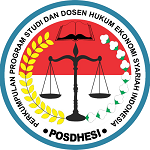The Pillars and Conditions of A Contract in Muamalat Transactions
DOI:
https://doi.org/10.32332/muamalah.v2i1.6983Keywords:
Pillars of the contract, Conditions of the contract, Islamic lawAbstract
Buying and selling transactions are natural occurrences that cannot be avoided by every human being because individuals rely on each other for their survival. For example, a meat seller needs a spice seller to enhance the flavor of their cooking, a lecturer needs patients to develop their knowledge, and so on. However, these transactions are inevitably subject to certain conditions and pillars of the contract, which can determine whether the transaction complies with Islamic law or, conversely, contradicts it. The findings of this study reveal that the pillars are divided into four categories, each with its inherent conditions. The first pillar is the presence of two contracting parties with the conditions of legal capacity and multiple parties. The second pillar is the form of the contract with the conditions of clear understanding, matching offer and acceptance, reflecting the sincerity of the parties involved, and taking place in a single gathering. The third pillar is the subject matter of the contract with the conditions that the transaction object must exist at the time of the transaction, be fully owned by its owner, be capable of transfer, have a clear description, and be pure. The fourth pillar is the purpose of the contract with the condition that it must comply with Islamic law.
Downloads
Downloads
Published
Issue
Section
License
Copyright (c) 2023 Ihsan

This work is licensed under a Creative Commons Attribution-ShareAlike 4.0 International License.
All articles in the Mu'amalah: Jurnal Hukum Ekonomi Syariah can be disseminated on condition that they still include the identity of the article and the source (Mu'amalah). The publisher is not responsible for the contents of the article. The content of the article is the sole responsibility of the author.
Authors who publish this subject agree to the following terms:
First, the Authors retain copyright and grant the journal rights from the first publication with the work simultaneously licensed under a Creative Commons Attribution-ShareAlike 4.0 International License that allows others to share the work with an acknowledgement of the work's authorship and initial publication in this journal.
Secondly, the authors can enter into a separate or an acknowledgement of its initial (e.g., post-institutional repository or publish it in a book) publication in this journal.
![]()
Third, the authors are permitted and encouraged to post their work online (e.g., in institutional repositories or on their website) before publishing work is cited.








